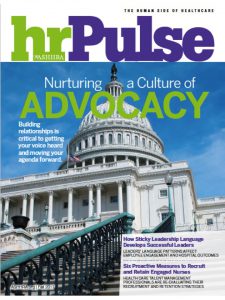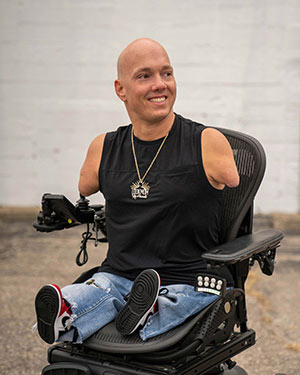 CPR For a Healthier ADA Compliance Process
CPR For a Healthier ADA Compliance Process
Resuscitating Your Medical Documentation Methodology
By Rachel Shaw
Complying with the complexities of the Americans with Disabilities Act (ADA) is daunting for many seasoned HR professionals. ADA compliance essentially requires two things of employers: 1) provide a timely, good-faith, interactive process and 2) provide reasonable accommodations to qualified individuals. What makes this law difficult to comply with is the Act does not provide clear instructions on how to ensure the process is “timely,” “good-faith,” or “interactive.” Employers are often left hoping their actions are appropriate and inline with the objectives of the law.
What makes this law difficult to comply with is the Act does not provide clear instructions on how o ensure the process is “timely, good-faith or interactive.”
Many laws are specific and provide clear direction as to what is required of an employer. For example, the Family Medical Leave Act (FMLA) provides explicit guidelines that dictate who is covered under the law. Once coverage is established, the outcome is the same for all persons. The ADA is different.
Today, employers are struggling with more and more requests for workplace accommodations. How do they keep up with the growing workload associated with ADA compliance matters? The answer is to ensure your organization understands the intent and purpose of the ADA, and to employ a consistent process. To do this, I recommend using “CPR” to resuscitate an organization’s disability compliance program.
“C” is for Content.
The key to the interactive process, and making good decisions in general, is to ensure you know your stuff! Get the data you need at the start of your disability interactive process. Information will be the foundation of your decision-making. When two parties are reviewing unclear restrictions, such as “heavy lifting and prolong standing,” there can be too much ambiguity as to what is defined as “heavy” or “prolonged.” This can result in opinions that knowingly, or unknowingly, rely on prejudices or positions. ADA compliance decision-making is easier when data is clear. For example, if evaluating restrictions that state “no lifting over 10 pounds when lifting with the right hand or left hand, and when lifting with both hands, can lift 20 pounds,” lifting is no longer an estimation or guess, it is a fact.
Content is 1) Clear Restrictions, 2) Clear Traditional Physical, Mental and Emotional Demands, and 3) Researching Accommodation Ideas.
To gather Content needed to ensure good decision-making, employers need to have a document that describes the traditional physical, mental and emotional demands of the job. This document is called an Essential Function Position Analysis® (EFPA). This document can be created by a third party, or by internal staff. Remember, it is created for a job classification, not a specific person.
Finally, the last piece of Content needed to support decision-making is to research how the specific restrictions may or may not conflict with the EFPA defined traditional physical, mental and emotional demands. This evaluation will also lead to performing research to see how the restrictions may be able to be accommodated and may have been accommodated by other employers.
Content is 1) Clear Restrictions, 2) Clear Traditional Physical, Mental and Emotional Demands, and 3) Researching Accommodation Ideas. Together, they are your foundation for making reasonable accommodation decisions.
“P” is for Process.
It is all about the process! The ADA not only tells you that you must provide reasonable accommodations, it states you violate the law if you don’t use a timely and good-faith process – but does not define the process. This leaves employers trying to figure out what a compliant process is on their own.
Disability Interactive Process Hallway®. It’s a metaphorical hallway with four doors, or key process steps, which lead you through determining if an employee is eligible for protections under the ADA, and to a justifiable decision and best possible outcome for the parties.
Good process builds understanding and trust with the parties involved. A well-defined and consistently applied process will ensure the right decisions are made and can be defended – if needed.
The Hallway provides a framework to gather the Content needed to make sound ADA compliance decisions. It provides steps to build trust and understanding between the parties. The four doors – or steps – in the Hallway are Door #1 – Data Gathering (clear work restrictions and EFPA); Door #2 – Research and Exploration of Accommodation Ideas; Door #3 – Scheduling and Holding a Reasonable Accommodations Meeting; and Door #4 – Implementing Decisions Made and Closing the Process Properly. The goal of the process is to support understanding and acceptance of decisions.
“R” is for Relationship.
It’s an adage as old as time – treat others as you would like to be treated – and it still applies. The disability interactive process is just that, interactive. ADA compliance requires you not only be interactive, but that you operate in good-faith. This means all interactions should focus on creating an environment in which the employee feels they are informed and a valued member of the decision process, regardless of their past performance or claim filing history. The employee is an equal partner in the process and his or her opinions are essential and valuable to consider.
In the end, the employer will make the decision, but it is important to show you not only allowed the employee to participate, but demonstrate the organization attempted to try and find a reasonable accommodation. By engaging with the intent to find a “yes” to accommodation you will find more “yesses.” When the interactive process leads to a “no,” when there are no reasonable accommodations available to implement, the work and efforts you engaged in will help the employee understand the decision, and provide proof. Plainly put, understanding reduces litigation. When employees feel listened to and valued, employers experience less litigation.
Be fair. Be open. Be honest. Don’t prolong difficult decisions and share all information. An efficient process, even if it is not the outcome desired, supports relationships to be maintained.
Be fair. Be open. Be honest. Don’t prolong difficult decisions and share all information. An efficient process, even if it is not the outcome desired, supports relationships to be maintained. The reality is, you juggle multiple important activities and projects. However, respect the fact you may be dealing with a potentially career-ending decision. Manage the process appropriately: don’t rush the process, but don’t take longer than needed. A prolonged and unorganized process can send the unintentional message the employee is not important or that you don’t fully appreciate the significance of the process.
Case Study: Getting the “C” of “C-P-R” Done Right
ADA compliance and coordinating the disability interactive process is more than completing a few steps – or what we think of as going through four doors of The Hallway. It’s about creating a story of what was done, why it was done and how it made the parties feel along the way. And, it all starts with “C” – Content. At Door #1 – Medical documentation is gathered to help focus all parties on tangible data sets and documents instead of emotions, resulting in better decisions and lower risk for your organization.
Todd was a custodian with a work injury. He was provided with work restrictions from his doctor including “no repetitive bending.” The employer held a meeting with Todd. There they discussed that bending at the waist occurred all day for custodians and though neither the organization or Todd knew how to quantify “repetitive,” established he likely would perform bending in his everyday job. As such, the employer determined they could not accommodate Todd, as bending was necessary to perform the essential functions of his job. An alternate work search was started, but nothing was available for him, and Todd was medically separated.
In the meeting Todd agreed repetitive bending at the waist was required as part of his job. Todd stated he felt he could modify his bending so as not to experience pain. Todd had needed to work and disagreed with the employer’s decision. While meeting notes were taken at the meeting, they were not signed by the parties.
Todd filed a lawsuit. After reviewing the employer documents it was discovered Todd’s injury was related to a torn rotator cuff in his left shoulder, which sent radiating pain to his left elbow. He had surgery and after four months was released back to work with “no repetitive bending” restrictions. Todd had no back pain or other injury that would appear to limit his bending at the waist.
The employer had not done due diligence at Door #1. They did not collect detailed “Content” and because of this failed to confirm which type of bending was restricted. It was assumed by the employer bending meant at the waist, when in fact, this was not stipulated. In the end, the employer settled as they had made a significant employment decision based on restrictions that did not exist.
While the employer may not have intentionally misunderstood Todd’s restriction, had the process of Door #1 – obtaining medical clarification – been performed, this mistake would not have occurred. Todd’s case was a large, and embarrassing, loss for the organization. However, smaller cases like Todd’s happen within organizations daily. The lesson is simple – take as much time as you need at Door #1 to outline and make sure everyone agrees on the essential functions of the position, and to obtain the right medical information to understand an employee’s abilities in reference to those essential functions.
With strong CPR, employers can be assured they are complying with the ADA obligations – both technically and philosophically. As practitioners in the field of ADA compliance we aim to find and implement reasonable accommodations. However, when a “yes” does not exist, we must ensure our work and our efforts work to limit unnecessary and costly litigation. CPR and The Hallway will help you do just this.
Rachel Shaw is the principal consultant of Shaw HRC Consulting, a Human Resources firm specializing in providing employers with a full range of Disability Compliance Management consulting and training services to support their compliance with federal and state disability and leave laws. Rachel is also the author of “The Disabled Workforce: What the ADA Never Anticipated.” The book is available at Amazon.
***** “Shaw’s smart, comprehensive … [a] systematic analysis and playbook for employers who might face overstated or false disability claims” — Kirkus Reviews
**** “Rachel Shaw has created an invaluable resource for employers and disabled employees alike.” — Authors Talk About it




 CPR For a Healthier ADA Compliance Process
CPR For a Healthier ADA Compliance Process
